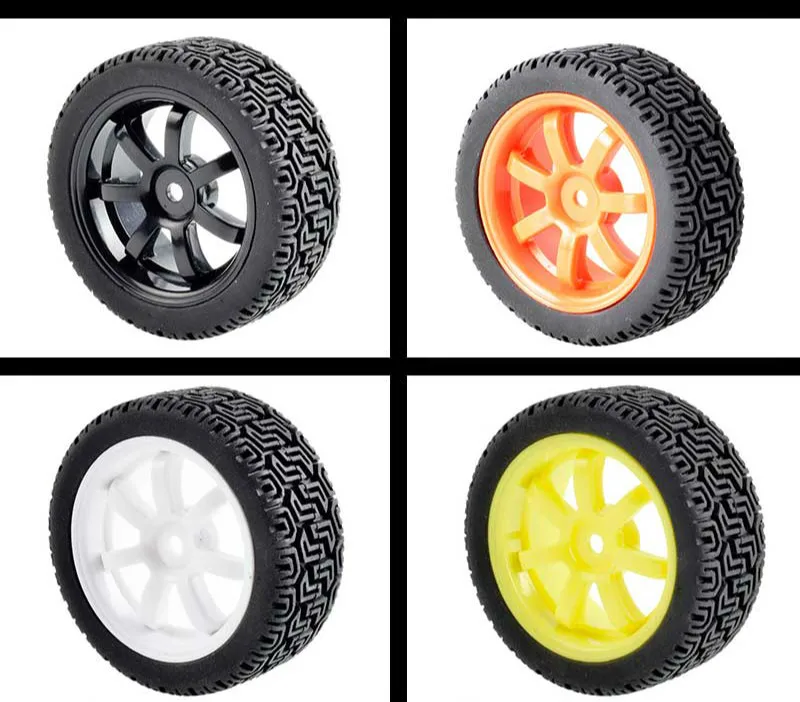Posted 17 June 2016 - 05:39 PM
I've narrowed some old retro tires to use as front, but I think they're softer than they should be. Is there anything you'd suggest they soak in to make them harder?
Posted 17 June 2016 - 05:43 PM
While I personally don't like a noisy front, you can coat them with nail polish.
Posted 17 June 2016 - 05:43 PM
Some guys down here paint them with nail polish and then give a light skim
Sent from my iPhone using Tapatalk
Posted 17 June 2016 - 06:02 PM
I've tried nail polish before, but frankly, it starts to crack and looks ugly after a couple races.
My chemistry (more like ancient alchemy) knowledge is extremely limited, but I realize that rubber is usually cured to a certain hardness before it's processed and sold. So, I really doubt there's anything physically that can be done to modify them.
Looks like nail polish is about the only solution.
Posted 17 June 2016 - 06:04 PM
Nail polish or super glue will work. One thing to keep in mind, oil will soften the rubber and even loosen up the glue holding the tire to the hub - so make sure not to over-oil things. Only use what it needs
Posted 17 June 2016 - 06:22 PM
Spray some black paint onto a piece of paper and roll the tires in it.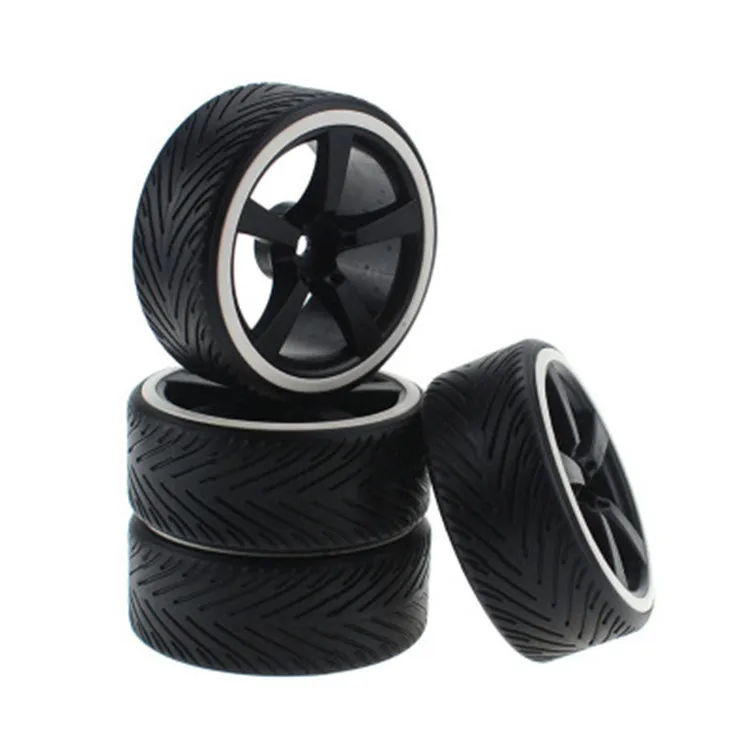
Sam Levitch
"If you have integrity, nothing else matters, and if you do not have integrity, nothing else matters."
Robert Mueller, special counsel (2013)
"... because people have got to know whether or not their president is a crook."
Richard M Nixon, Nov 17, 1973
"Fool me once, same on... shame on you. Fool me... you can't get fooled again."
George W, Bush
Posted 17 June 2016 - 06:24 PM
Well the problem is anything you use to firm them up will also cut the glue holding them to the wheels! Soaking them in MEK will firm them--but then you'll have to remount them. The other thing you can coat them with is thin super glue. Easy to do--put a little on a glass surface and run the tires over them slowly to get a nice even coat. I think it lasts longer than nail polish.
The other thing you can coat them with is thin super glue. Easy to do--put a little on a glass surface and run the tires over them slowly to get a nice even coat. I think it lasts longer than nail polish.
She's real fine, my 409!!!
Posted 17 June 2016 - 07:00 PM
Thin CA glue will soak in the best of anything I've tried.The key is to use thin stuff and not regular super glue.
Robert Fothergill
Posted 17 June 2016 - 07:22 PM
Try this. .. http://www.rockler.c...set-glue-2-5-oz, the thin works great, as well as the flexible
.. http://www.rockler.c...set-glue-2-5-oz, the thin works great, as well as the flexible
Posted 17 June 2016 - 07:24 PM
Jim, with all due respect to the suggestions above, my experience has been different.
Nothing beats fresh rubber from established slot car sources. My advice is, save the hubs from used wheels, discard the rest, and buy new tires/wheels.
Trying to rejuvenate spent rubber is a waste of time. That's just my opinion, and I know many will disagree.
Posted 17 June 2016 - 09:47 PM
Jim,
Clean them real well with lighter fluid/naptha. Leave them exposed to air & sunlight for about 6 months. They should be about right.
Leave them exposed to air & sunlight for about 6 months. They should be about right.
Posted 18 June 2016 - 06:14 AM
Jim, with all due respect to the suggestions above, my experience has been different.
Nothing beats fresh rubber from established slot car sources. My advice is, save the hubs from used wheels, discard the rest, and buy new tires/wheels.
Trying to rejuvenate spent rubber is a waste of time. That's just my opinion, and I know many will disagree.
I have to agree with this assessment. Almost every front I made from recycled old rears lost their rubber or chunked badly. Usually during a race.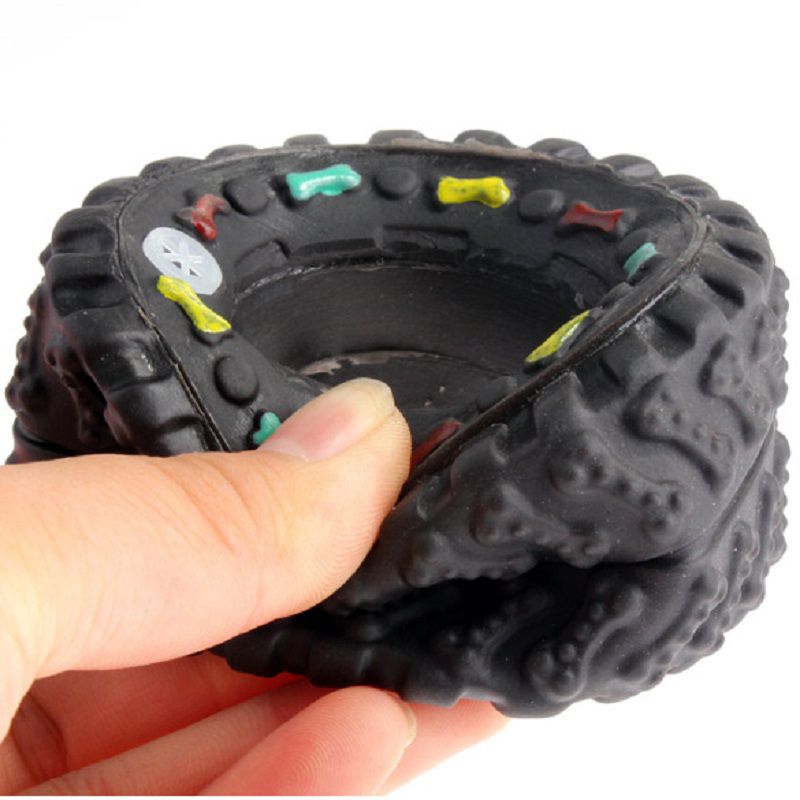
Sam Levitch
"If you have integrity, nothing else matters, and if you do not have integrity, nothing else matters."
Robert Mueller, special counsel (2013)
"... because people have got to know whether or not their president is a crook."
Richard M Nixon, Nov 17, 1973
"Fool me once, same on... shame on you. Fool me... you can't get fooled again."
George W, Bush
Posted 18 June 2016 - 11:32 AM
The only rears that seem to work decent as fronts are Wonder rubber. I have had good luck turning down both Alphas and JK's and coat them with the Flexible CA from Rockler.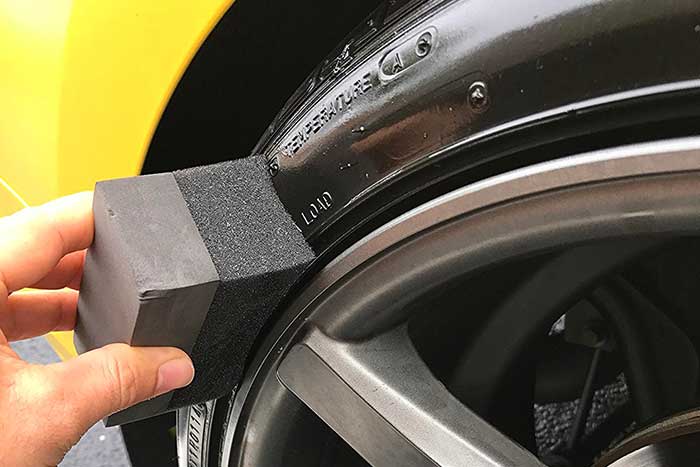
Posted 18 June 2016 - 04:55 PM
I think Pablo and Sam's assessment is actually best!! Trying to "rejuvenate" old tires is not worth the savings!!
She's real fine, my 409!!!
Posted 18 June 2016 - 05:46 PM
Thanks for the suggestions, guys. I guess my attempt at being frugal -- and trying to avoid being wasteful -- was only good intention. Think I'll just buy a new set of fronts next time I'm at the track.
Good racing to all,
jb
Posted 19 June 2016 - 01:45 AM
Hard donuts (JK) can be mounted and ground to size. At least save the rims. Coffee can of acetone strips the tires overnight.
Posted 19 June 2016 - 01:58 PM
.... Soaking them in MEK will firm them--....
1.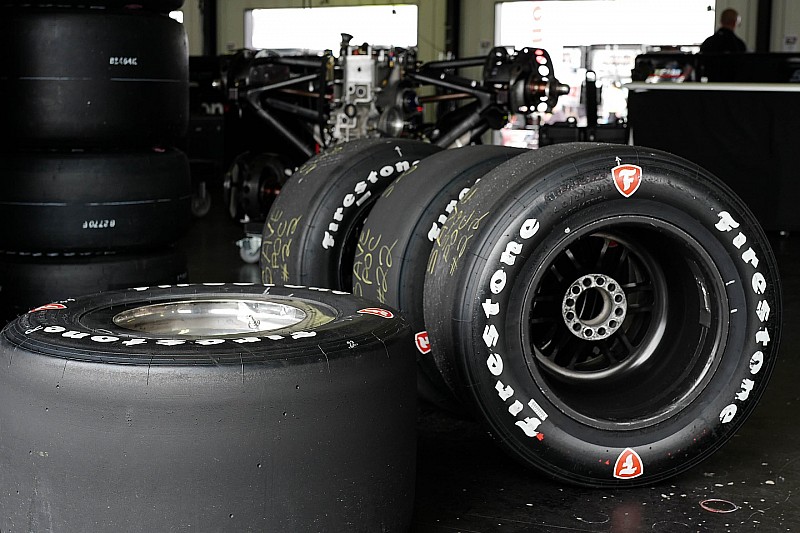 How long do you typically soak in MEK for?
How long do you typically soak in MEK for?
2. If MEK firms up tyres, what do you use to soften them
Sent from my iPhone using Tapatalk
Posted 20 June 2016 - 04:38 PM
Zip grip will soften tires
Posted 21 June 2016 - 02:12 PM
If you can find Toluene--it's a chemical used in rubber and glue--it will melt the tires off the rims if you want to!!
She's real fine, my 409!!!
Posted 21 June 2016 - 09:54 PM
The only rears that seem to work decent as fronts are Wonder rubber.
I have had good luck turning down both Alphas and JK's and coat them with the Flexible CA from Rockler.
Best advice Wonder Rubber. You can order doughnuts from PCH. I found coating with super glue over a soft tire cracks, unless you go multiple coats to make them very hard which is counter productive.
Mark Wampler
?/?/1950-3/8/22
Requiescat in Pace
Posted 22 June 2016 - 09:19 AM
What type of durometer is used for testing slot car tires and where can you get one?
Posted 22 June 2016 - 09:44 AM
I think most are using cheap Shore A durometers, Ebay for instance.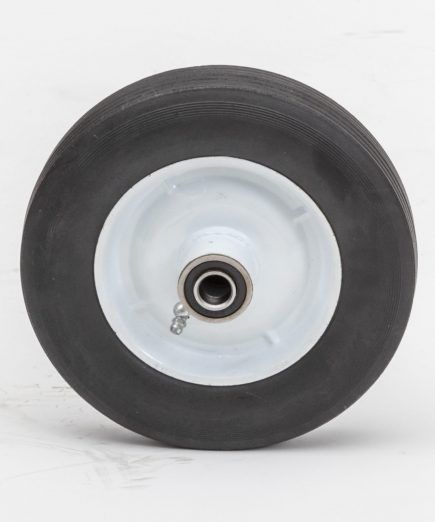 Some do use Shore D.
Some do use Shore D.
Pekka Sippola
I have some older Dunlop and some yellow Vegas that I would like to harden up. I am not using them for racing but for a special project for use on sand. Any ideas?
I would just leave them out in the sun for a week or two, maybe longer
Heat cycle them in a hot box. Occasionally clean them with Simple Green or Acrysol to pull oils out of the rubber.
Occasionally clean them with Simple Green or Acrysol to pull oils out of the rubber.
More heat cycles, repeat.
-----
Thanks and God bless,
Brian Carlson
Carlson Racing Engines
Vector Cutz
www.CarlsonMotorsports.com
Carlson Motorsports on Facebook
32 years of service to the karting industry ~ 1Cor 9:24
Linden, IN
765-339-4407
[email protected]
CarlsonMotorsports said:
Heat cycle them in a hot box.
Occasionally clean them with Simple Green or Acrysol to pull oils out of the rubber.
More heat cycles, repeat.-----
Thanks and God bless,
Brian Carlson
Carlson Racing Engines
Vector Cutz
www.CarlsonMotorsports.com
Carlson Motorsports on Facebook
32 years of service to the karting industry ~ 1Cor 9:24
Linden, IN
765-339-4407
[email protected]Click to expand...
I need to do this too. What temp and how long in hotbox. Any air in tires ?
Enough so they roll good .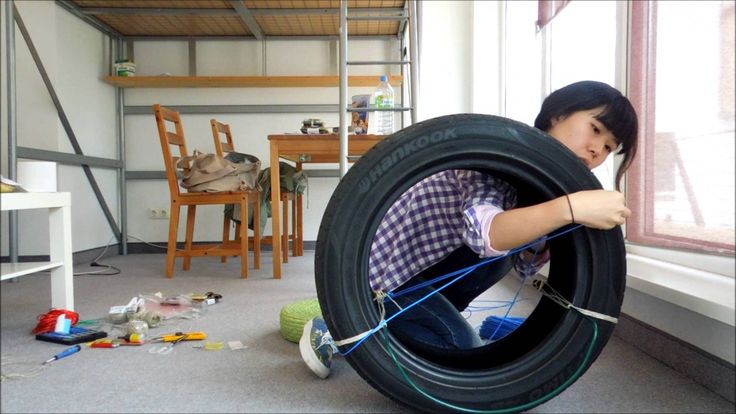 Yes, don't roll them with too low (or too high) of air, or they'll resize themselves.
Yes, don't roll them with too low (or too high) of air, or they'll resize themselves.
Use this time to that advantage - size the tires while you are trying to pull some oils out of the tires.
Are there other options if you don't have a hot box or excess to one?
Mofo26 said:
Are there other options if you don't have a hot box or excess to one?
Click to expand.
..
The bigger question is whats your overall plan for the tires ?
You said sand ,are yougoing toboltcups on them or try vulcanizing paddles on ?
Dunlops should be pretty hard too begin with .
Burris tires
A lesson learned by mistake thinking it would soften tires was a few good coats of Safety - Kleen ( parts washer fluid ) and a heat cycle hardened my tires up good !
Rub with baby powder or baking soda. Put them in the sun.
Somebody just told me bleach will harden a tire.
throw em in the neighbors pool while they are away.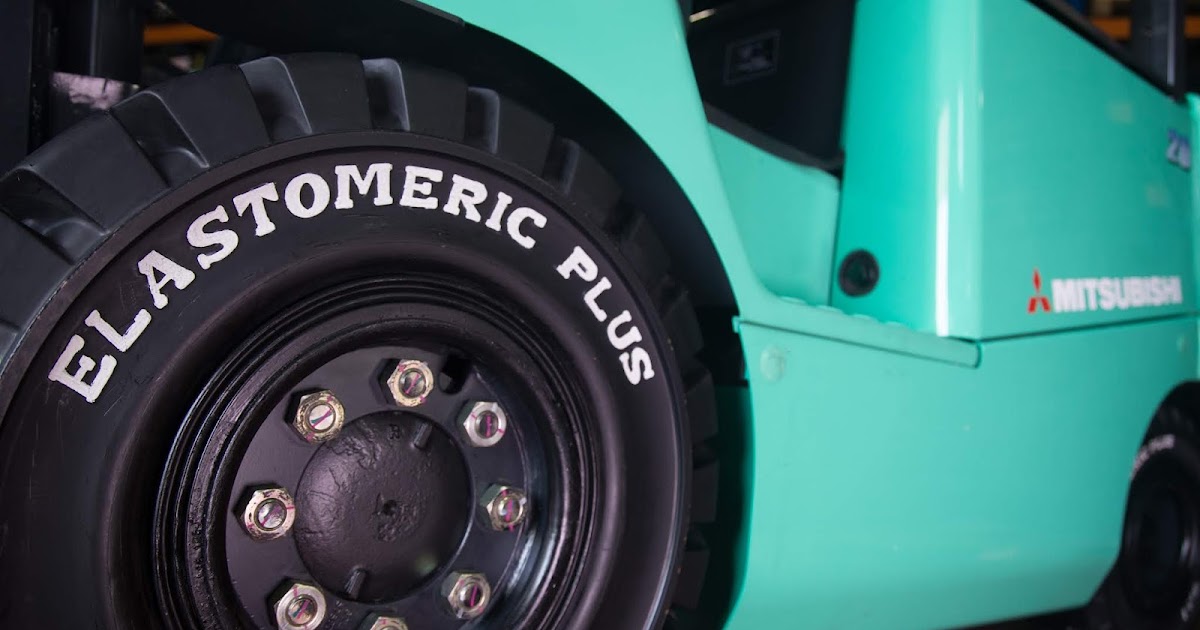 . the chlorine does a number on em
. the chlorine does a number on em
No other automotive theme hides so many emotions. Tire grip is discussed as a natural phenomenon is usually discussed. With examples from the school course of physics (who understood how) and personal life (who drives how). And not a single reference to mass studies, official manufacturer statistics or other convincing data.
Actually there is nothing to argue about. It is important to accept the 3 fundamental points as an axiom, without proof.
First. In a global sense, the degree of grip of a tire with the road surface is affected by everything. Wheel size, vehicle center of gravity, body aerodynamics, fender structure, suspension condition, tire pressure, air temperature, road type, vehicle speed, tire composition/condition. It is absolutely unrealistic to conduct worthy and objective tests for all variations of vehicle and environmental conditions.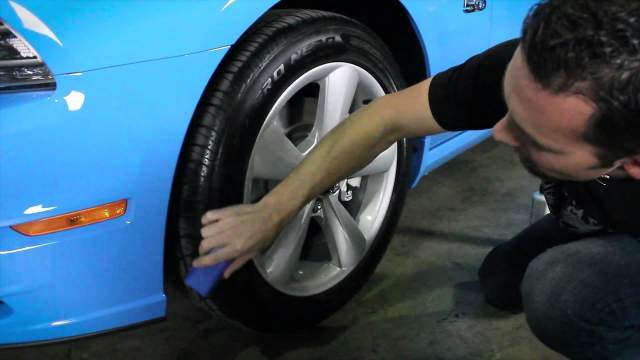 Therefore, the manufacturer's statements on this topic are advertising. If you respond to the words about strong grip and, for example, want to buy Yokohama tires in Yekaterinburg in the summer and immediately go to the track, do not be surprised if the claimed grip does not live up to expectations. You are on new tires, and their connection with dry asphalt is lower than that of lapped ones.
Therefore, the manufacturer's statements on this topic are advertising. If you respond to the words about strong grip and, for example, want to buy Yokohama tires in Yekaterinburg in the summer and immediately go to the track, do not be surprised if the claimed grip does not live up to expectations. You are on new tires, and their connection with dry asphalt is lower than that of lapped ones.
This leads to the second conclusion . Three main factors effectively (that is, measurably) influence the grip of a tire with the road: speed, tire condition (wear and composition), surface quality (asphalt, ice, wet road, dirt, snow). That is, the same rubber can show different grip strength depending on the conditions: road and weather. The data obtained from the dynamometer studies were summarized in two tables. The first determines the dependence of grip on the quality of the road surface (data from the standard course "Fundamentals of Highway Operations"). The second is called "The value of the temperature correction to the adhesion coefficient", developed in the framework of GOST 30413-96 and is used to correct the friction coefficient.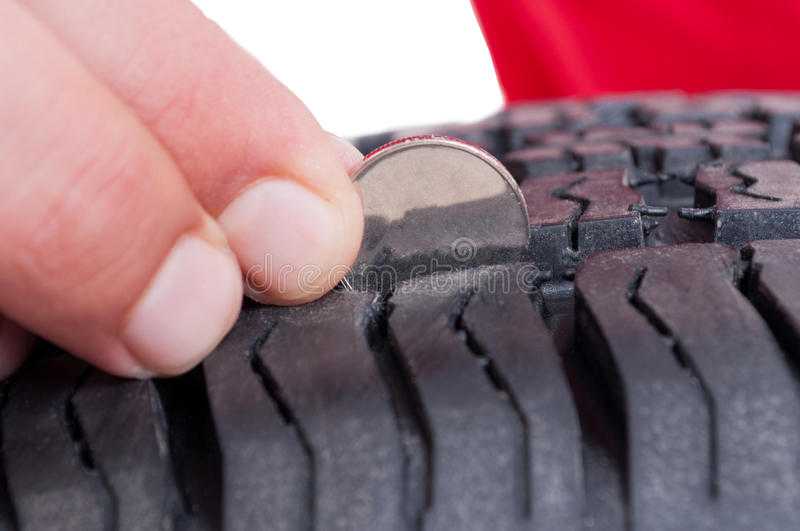 In general sources, you can find a lot of hybrids of these tables. For example, like this.
In general sources, you can find a lot of hybrids of these tables. For example, like this.
Or a table that combines vehicle speed, tire age and road moisture.
At the same time, not a single table contains conditions related to the shape of tires, car brand and other subjective characteristics. Only road surface, tire quality and speed are taken into account.
Third moment. Why do only three characteristics have a significant effect on tire grip? Because the basis of the interaction of the wheel with the road surface is friction. And what this surface will be like (smooth, with a water film, with an ice crust, etc.) is the #1 determining factor. What will be the tire (smooth, soft, hard, sticky) - determining factor number 2. All fabrications about the importance of tread pattern or tire width are nothing more than an attraction of extraneous facts. The most smooth rubber is installed on racing cars, and it confidently keeps the sports car on bends.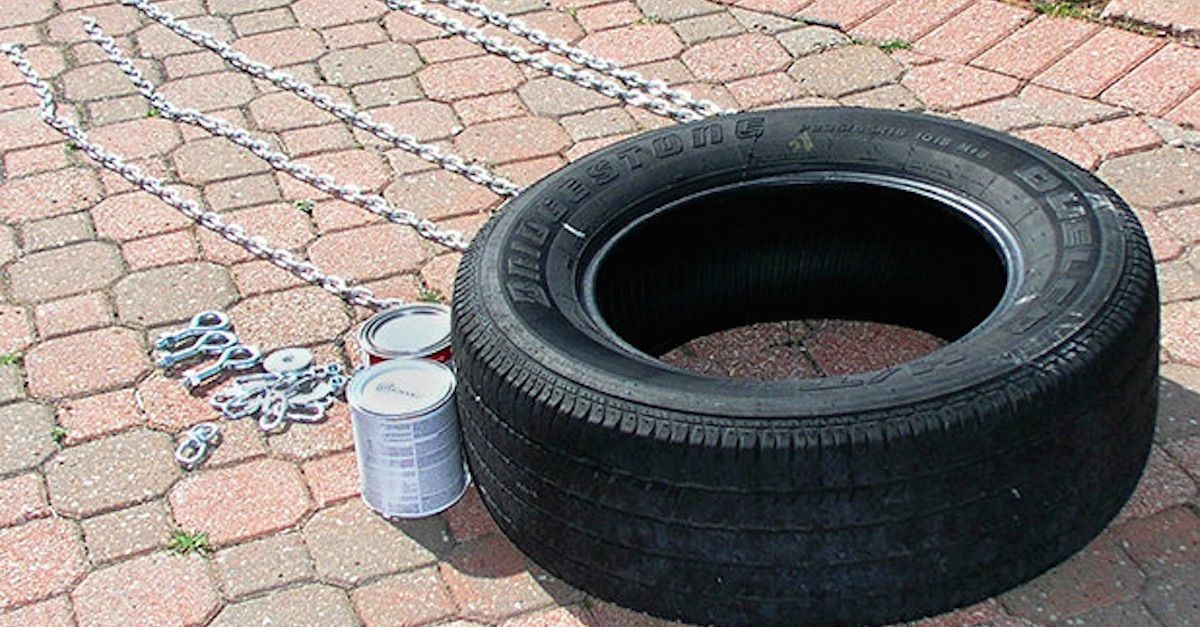 But everything happens on perfectly smooth asphalt. If we change the road, there will be a different result.
But everything happens on perfectly smooth asphalt. If we change the road, there will be a different result.
In summary, how do you influence tire grip under specific conditions?
1. Put high-quality rubber on the car, do not bring it to critical wear. The reviews say different things. Let's go back to the same example - buy Yokohama tires. In Yekaterinburg in the summer, they can have a high rating for grip properties, and a low one in Sochi.
2. Check clutch every time conditions change: new tyres, rain, snow, ice. We slow down and understand how the car behaves.
3. Use additional traction aids in extreme situations. Most often they are needed in winter in extreme situations: sprays for driving on ice, plastic / silicone / metal clamps and snow chains, sand on the road.
End-of-life car tires are a rather serious environmental problem. Even in Russia, from January 1, 2012, a national standard began to operate that establishes requirements for the environmentally friendly disposal of used tires (GOST R 54095-2010).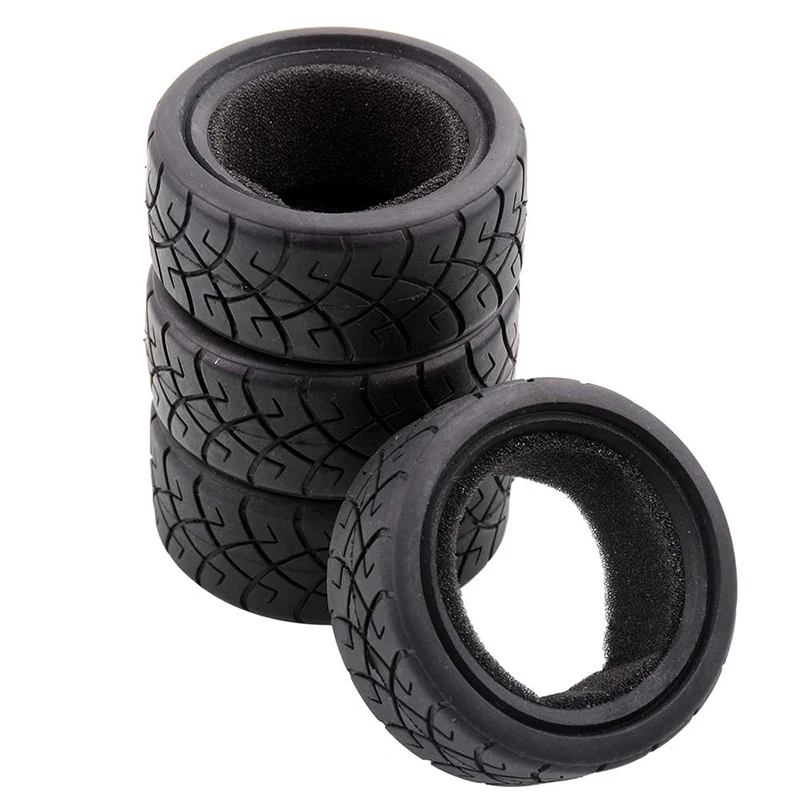 According to the information given in the text of the document, the global reserves of used tires are estimated at 25 million tons, and the annual increase in used tires is at least 7 million tons (10.5 billion pieces), of which about 30% are in European countries. . Only 23% of used tires are used in the future, including through export to other countries, incineration, grinding, etc. The remaining 77% is simply buried or stored in landfills, mainly due to the lack of a cost-effective disposal method.
According to the information given in the text of the document, the global reserves of used tires are estimated at 25 million tons, and the annual increase in used tires is at least 7 million tons (10.5 billion pieces), of which about 30% are in European countries. . Only 23% of used tires are used in the future, including through export to other countries, incineration, grinding, etc. The remaining 77% is simply buried or stored in landfills, mainly due to the lack of a cost-effective disposal method.
But experts believe that the disposal of used tires should be used only in the absence of economically viable alternatives. It often becomes profitable to dispose or recycle tires only in the face of harsh environmental standards and penalties for mishandling such “waste”, or in the face of government financial support. At the same time, tire recycling projects will be economically much more attractive if the next stage of processing is included in the process - that is, if we mean getting crumb rubber, then not only and not so much for sale, but for the production of our own products of the second processing stage, which is in demand and has enough high market value.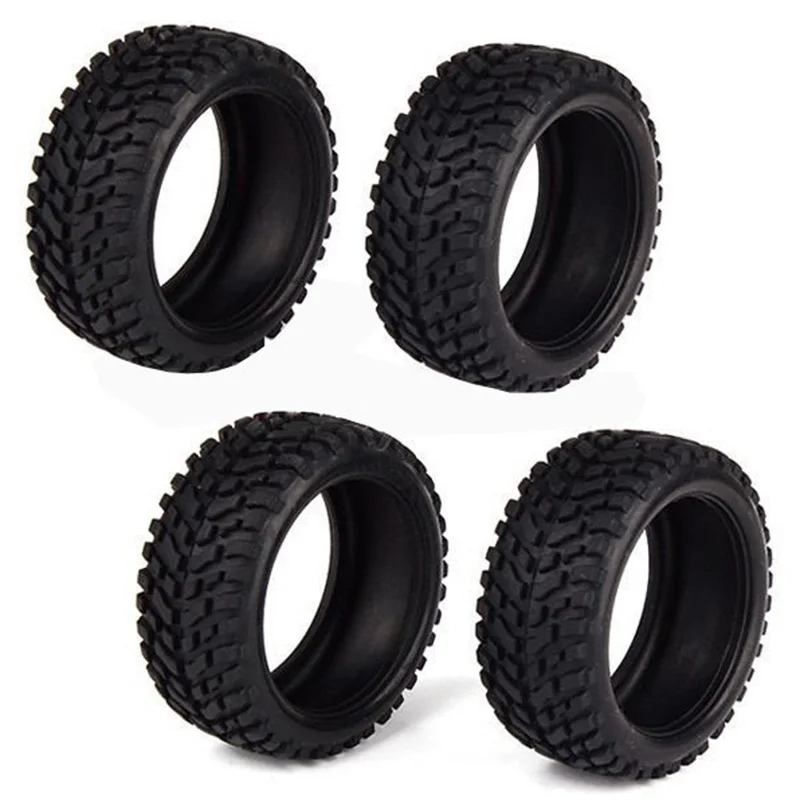
From the point of view of storing used tires in landfills or landfills (whether intended exclusively for used tires or mixed with other waste), there is a high risk of ignition. Worn-out tires are a source of long-term environmental pollution, as they are not biodegradable and serve as sources of infectious diseases. Therefore, during burial, tires are crushed into squares of 100 cm 2 and laid at an angle in layers 1-2 m high; each such layer is sprinkled with earth 20-25 cm thick. A layer of turf 30 cm thick is applied over the entire burial area.
In some countries, the disposal of tires that have completed their life cycle is prohibited. In Germany, Japan and the Scandinavian countries, the level of recycling of used tires is approaching 100%, the average for the EU is 82%; in other countries - only 10-15%.
A small part of used tires is used without any processing - to strengthen the coast, create artificial reefs, erosion barriers, breakwaters and breakwaters, to protect ships from impacts during mooring, create shock barriers on roads, shock-absorbing fences, flower beds, etc.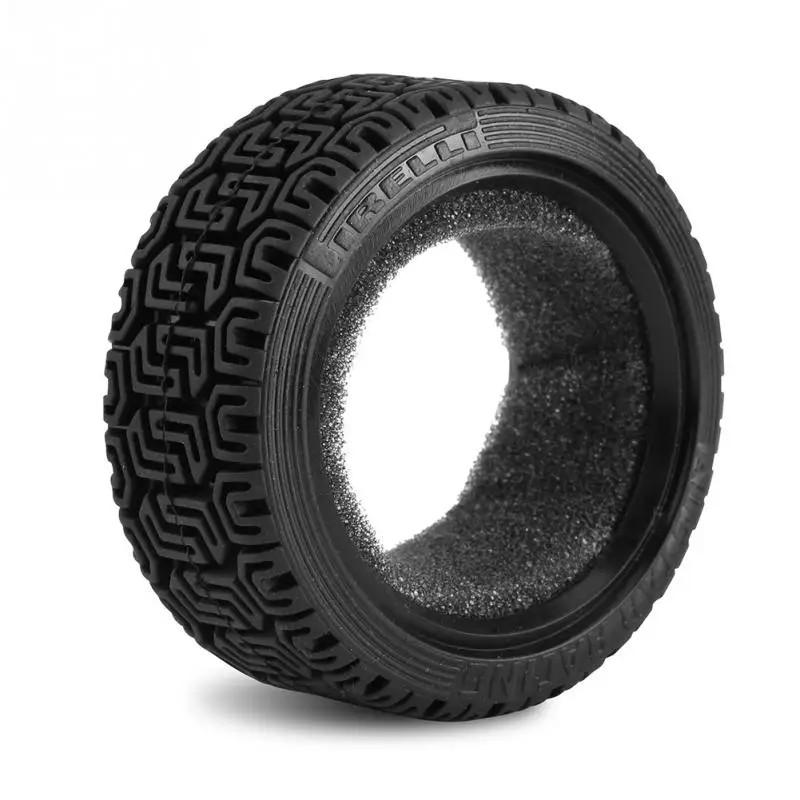 In construction, tires filled with cement are used to create the foundation of foundations.
In construction, tires filled with cement are used to create the foundation of foundations.
Most of the used tires are disposed of by incineration (in France - 18%, Great Britain - 30%, Germany - 50%, Japan - 70%). The rest are either restored, or crushed into crumbs, or decomposed chemically.
Tire refurbishment can be done in two ways. The first, used only for truck tires, is regrooving the tread. The possibility of such restoration of a cargo tire is associated with its high margin of safety - the tire carcass guarantees its service life, up to 6 times longer than the life span of the tread tread. The second method, which can be applied to all types of tires, is the application of a new tread with a partial addition of crumb rubber. This method is economical, since not all components of the car tire are restored, but only the tread. Applying a new tread allows you to reuse the tire by 80%. However, tires can only be retreaded this way a limited number of times. In addition, it is advisable to restore only high-quality tires with a solid base. Retreaded tires are a well developed industry in OECD countries. But in Russian conditions, full tire retreading is cost-effective only for premium tires. If we consider the technologies for restoring worn tires, then we can distinguish between hot (welding) and cold methods. The hot recovery method involves cutting and hot vulcanizing a special smooth tape with a parallel application of a tread pattern. For cold vulcanization, tapes with a pre-printed pattern are used, which are stretched on a special machine and put on a prepared breaker. There is also a method involving gluing a tire cleaned from the old tread and a new tread, followed by vulcanization. Subsequently, the retreaded tires again become unusable, which again leads to the problem of their recycling.
Retreaded tires are a well developed industry in OECD countries. But in Russian conditions, full tire retreading is cost-effective only for premium tires. If we consider the technologies for restoring worn tires, then we can distinguish between hot (welding) and cold methods. The hot recovery method involves cutting and hot vulcanizing a special smooth tape with a parallel application of a tread pattern. For cold vulcanization, tapes with a pre-printed pattern are used, which are stretched on a special machine and put on a prepared breaker. There is also a method involving gluing a tire cleaned from the old tread and a new tread, followed by vulcanization. Subsequently, the retreaded tires again become unusable, which again leads to the problem of their recycling.
The method of recycling car tires by burning them is considered to be quite effective due to their high thermal potential. So, the heat of combustion of 1 ton of used tires is equivalent to the heat of combustion of 1 ton of quality coal or 0. 7 tons of liquid fuel. At the same time, you can burn both crumb rubber and whole tires. Incineration of whole old tires often takes place in cement kilns or in thermal power plants. Recently, this practice has become less common: in the cement industry, the number of tires used as fuel is technologically limited, since the steel contained in the tires stains the material and negatively affects the quality of cement, and burning tires at thermal power plants has become unprofitable due to increased fines due to environmental dangers of such use. The burning of crumb rubber also poses a significant environmental hazard, since a lot of harmful substances are released into the atmosphere. However, in the US, for example, most pulp mills operate on crumb rubber. But, perhaps, the main argument "against" is the fact that the burning of used tires destroys the chemically valuable substances contained in the tire material, and which can be obtained by other methods of processing. Some compromise is the use of crumb rubber as additives to the main fuel - usually in the region of 10-15%.
7 tons of liquid fuel. At the same time, you can burn both crumb rubber and whole tires. Incineration of whole old tires often takes place in cement kilns or in thermal power plants. Recently, this practice has become less common: in the cement industry, the number of tires used as fuel is technologically limited, since the steel contained in the tires stains the material and negatively affects the quality of cement, and burning tires at thermal power plants has become unprofitable due to increased fines due to environmental dangers of such use. The burning of crumb rubber also poses a significant environmental hazard, since a lot of harmful substances are released into the atmosphere. However, in the US, for example, most pulp mills operate on crumb rubber. But, perhaps, the main argument "against" is the fact that the burning of used tires destroys the chemically valuable substances contained in the tire material, and which can be obtained by other methods of processing. Some compromise is the use of crumb rubber as additives to the main fuel - usually in the region of 10-15%.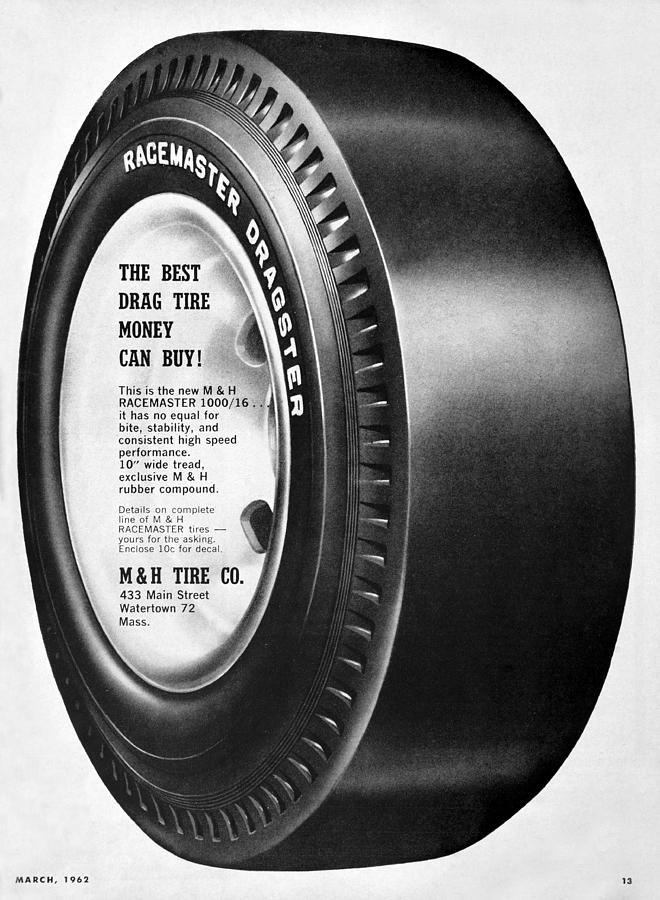
The main components of car tires are materials such as rubber (about 71%), metal threads and wire (21%), textile cord (8%). These are valuable materials, which, especially in conditions of depletion of natural resources, are at least not reasonable to throw away or bury in the ground. Rubber isolated from tires is used in the construction and manufacture of a wide range of rubber products. Textile cord is used as a raw material for the manufacture of heat and sound insulating materials, for plugging wells during drilling, as a reinforcing filler in the manufacture of composite elastomeric materials. Metal cord is used as a raw material for the manufacture of steel and reinforcing filler for building and road structures.
There are several well-known methods for separating used tires into their valuable components.
The most traditional and customary way to dispose of tires is their grinding to obtain crumb rubber of varying degrees of dispersion. There are a large number of variations of this technology, but they all have one thing in common - the constituent parts of the tire (rubber and reinforcing materials) do not undergo physical and chemical changes and retain their structure.
Tire shredding, as a rule, does not require complex technology and equipment, which indicates the cost-effectiveness of this method. The shredded rubber is divided depending on the size of the crumb and is further used in the production of new tires, in the construction of roads, in the creation of special sports surfaces, roof coverings, and decorative tiles. One of the problems of further use of crumb rubber is the different quality requirements of subsequent consumers. Thus, the use of rubber crumb to create new rubber products requires its complete purification from the metals contained in the tire carcass. Therefore, there is a need to complicate the technological process of separating tires into components. Good results in the separation of rubber from steel cord can be achieved in various ways, for example, separation in an electromagnetic field. Ultimately, the price of the resulting crumbs rises, which does not always suit the potential consumer. Similar problems arise when using rubber crumb in the construction industry (road surfaces and insulating materials). To obtain a homogeneous product with the required properties, it is necessary to select a recipe based on the qualitative characteristics of all constituent materials. However, the rubber crumb obtained from different batches of raw materials will vary significantly in composition, since it is difficult to feed a batch of tires of only a certain type and one manufacturer for grinding. Significantly better results are achieved when using crumbs in the production of paving slabs, sports arena surfaces, rugs and roofing.
To obtain a homogeneous product with the required properties, it is necessary to select a recipe based on the qualitative characteristics of all constituent materials. However, the rubber crumb obtained from different batches of raw materials will vary significantly in composition, since it is difficult to feed a batch of tires of only a certain type and one manufacturer for grinding. Significantly better results are achieved when using crumbs in the production of paving slabs, sports arena surfaces, rugs and roofing.
One type of tire cutting technology is low-temperature crushing. With the help of liquid nitrogen or refrigerators, tires are cooled to a temperature of about -60 degrees Celsius, after which they are sent for cutting. The processing of brittle rubber significantly reduces the energy consumption for crushing, improves the separation of metal and textile from rubber, and increases rubber yield. On the other hand, cooling also requires significant energy costs.
Another approach using cryogenic technologies is of great interest.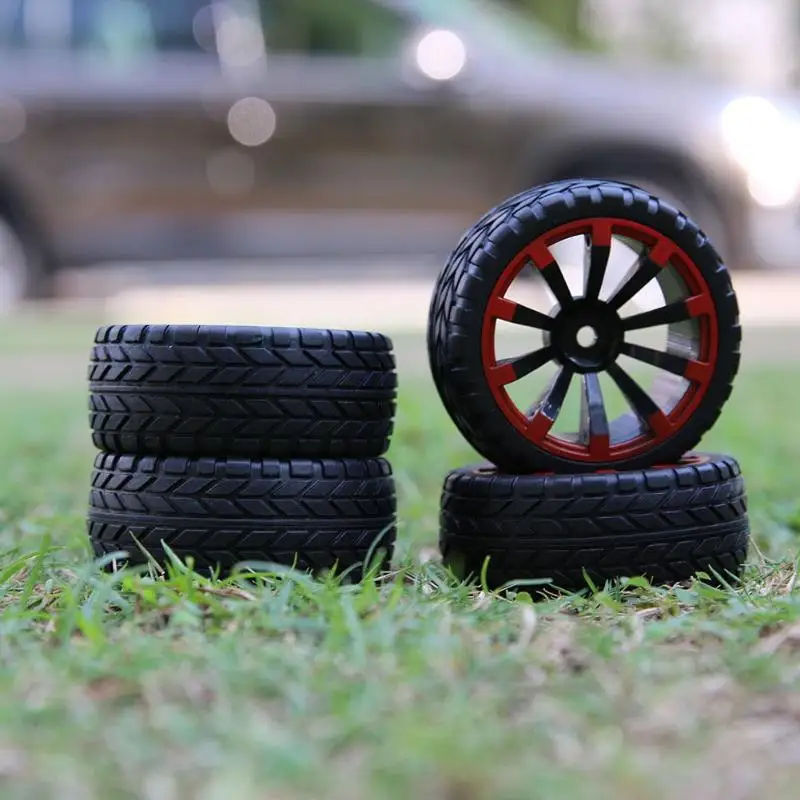 Tires are frozen to a temperature of -110-120 degrees, after which they are subjected to explosive grinding in a special chamber. Explosion technology is very cheap because it does not require a cutting tool and is not associated with an expensive service. The crushing action of the explosion simultaneously acts as a cutting tool and an energy carrier. Under the action of the explosion, the cooled tire expands 3-4 times, retaining its integrity, and only then does its material break down into tiny fragments. This effect is due to the fact that during the explosion high deformation rates of frozen tires are realized, leading to their destruction. The parameters of the crushing action of the explosion are very high and sufficient to destroy any existing types and types of tires. At the same time, the metal cord remains intact, and the rubber crumb simply crumbles from it. This technology was developed by the domestic company Explotex, for which in 2007 it was awarded the Prize of the Government of the Russian Federation.
Tires are frozen to a temperature of -110-120 degrees, after which they are subjected to explosive grinding in a special chamber. Explosion technology is very cheap because it does not require a cutting tool and is not associated with an expensive service. The crushing action of the explosion simultaneously acts as a cutting tool and an energy carrier. Under the action of the explosion, the cooled tire expands 3-4 times, retaining its integrity, and only then does its material break down into tiny fragments. This effect is due to the fact that during the explosion high deformation rates of frozen tires are realized, leading to their destruction. The parameters of the crushing action of the explosion are very high and sufficient to destroy any existing types and types of tires. At the same time, the metal cord remains intact, and the rubber crumb simply crumbles from it. This technology was developed by the domestic company Explotex, for which in 2007 it was awarded the Prize of the Government of the Russian Federation. Built in 2004 on the basis of explosive circulating grinding, the tire processing plant operates in the Vladimir region, in the city of Raduzhny. The technology is patented in 45 countries around the world.
Built in 2004 on the basis of explosive circulating grinding, the tire processing plant operates in the Vladimir region, in the city of Raduzhny. The technology is patented in 45 countries around the world.
Another promising technology for crushing tires is their processing by passing ozone (cutting with an ozone knife), under the influence of which the tire crumbles into small crumbs and is separated from the metal and textile cord. The technology was introduced in 2000 by Russian scientists from the Troitsk Technological Laboratory participating in the OK-Technology project. The technology is quite economical and environmentally friendly, since ozone oxidizes all harmful emissions. This method of recycling tires was awarded the gold medal of the 26th International Salon of Inventions, held in the spring of 2000 in Geneva. In addition to the Russians, the American OK Tech Inc., which holds patents for OK technology and carries out licensing activities, and the British OK Tech Alliance Ltd. , which designs and supplies recycling lines for used tires using OK technology, are participating in the project.
, which designs and supplies recycling lines for used tires using OK technology, are participating in the project.
Finally, crumb rubber can also be obtained with the help of pressure. The technology is based on the phenomenon of "pseudo-liquefaction" of rubber at high pressures and its flow through the holes of a special chamber. At the same time, rubber and textile cord are separated from the metal cord and bead rings, crushed and exit the holes in the form of primary rubber-fabric crumb, which is subjected to further processing: regrinding and separation. The metal cord is removed from the chamber in the form of a compressed briquette. The developer of this technology is also a Russian company - the Perm State Research and Production Enterprise Kord-ex. The technology was introduced at the Astor enterprise (Perm), protected by patents and also received a number of awards.
The next group of tire recycling technologies involves the partial destruction of the spatial structure of rubber and rubber - for example, the technology of dissolving the rubber of used tires in a solution based on organic compounds.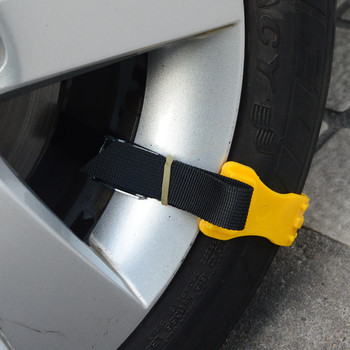 The resulting suspension can later be used to create rubber products with partial use of the processed product. The main disadvantage of this technology is its high energy and capital intensity, and, consequently, high cost. In the domestic industry, three main methods were used to obtain rubber regenerate - a plastic material that can be vulcanized when vulcanizing agents are added to it and partially replace rubber in the composition of rubber compounds: steam (about 15%), water-neutral (40%) and thermomechanical (45%). Regardless of the regeneration method, rubber products (mainly car tires) first undergo preparatory operations for sorting and grinding. In the steam method, crumb rubber is mixed with softeners and treated in a devulcanization boiler with live steam under a pressure of 1.0 MPa at a temperature of 180 degrees for 708 hours. The resulting devulcanizate is filtered, homogenized and plasticized. The main disadvantage of the steam method is the production of a non-uniform degree of plasticity of the regenerate due to the lack of mixing of the devulcanized mass.
The resulting suspension can later be used to create rubber products with partial use of the processed product. The main disadvantage of this technology is its high energy and capital intensity, and, consequently, high cost. In the domestic industry, three main methods were used to obtain rubber regenerate - a plastic material that can be vulcanized when vulcanizing agents are added to it and partially replace rubber in the composition of rubber compounds: steam (about 15%), water-neutral (40%) and thermomechanical (45%). Regardless of the regeneration method, rubber products (mainly car tires) first undergo preparatory operations for sorting and grinding. In the steam method, crumb rubber is mixed with softeners and treated in a devulcanization boiler with live steam under a pressure of 1.0 MPa at a temperature of 180 degrees for 708 hours. The resulting devulcanizate is filtered, homogenized and plasticized. The main disadvantage of the steam method is the production of a non-uniform degree of plasticity of the regenerate due to the lack of mixing of the devulcanized mass.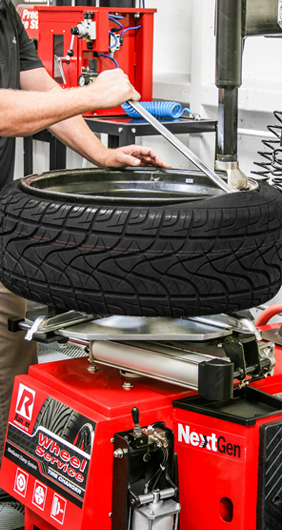 Significantly better quality regenerate is obtained by the water-neutral method. The process of devulcanization of de-woven rubber is carried out in vertical autoclaves equipped with agitators in an aqueous emulsion of softeners at 180 degrees for 5-8 hours. At the end of the devulcanization process, the content is transferred under slight pressure to a buffer tank, from where it enters a mesh drum to separate from water. Further mechanical treatment of the devulcanizate to obtain a regenerate is carried out similarly to the steam treatment. Technically, the most advanced method of rubber regeneration is the thermomechanical method, which allows to significantly speed up the technological process. In the production of regenerate by the thermomechanical method, the detextured rubber crumb is continuously mixed with softeners and passed through a worm devulcanizer at a temperature of 140-210 degrees, followed by processing on refining rollers. The regenerate produced in this way is more homogeneous and plastic than the regenerate obtained by the water-neutral method.
Significantly better quality regenerate is obtained by the water-neutral method. The process of devulcanization of de-woven rubber is carried out in vertical autoclaves equipped with agitators in an aqueous emulsion of softeners at 180 degrees for 5-8 hours. At the end of the devulcanization process, the content is transferred under slight pressure to a buffer tank, from where it enters a mesh drum to separate from water. Further mechanical treatment of the devulcanizate to obtain a regenerate is carried out similarly to the steam treatment. Technically, the most advanced method of rubber regeneration is the thermomechanical method, which allows to significantly speed up the technological process. In the production of regenerate by the thermomechanical method, the detextured rubber crumb is continuously mixed with softeners and passed through a worm devulcanizer at a temperature of 140-210 degrees, followed by processing on refining rollers. The regenerate produced in this way is more homogeneous and plastic than the regenerate obtained by the water-neutral method.
In our country, such regenerate production methods as the dispersion method and the radiation method are also used. The despirization method consists in the mechanical grinding of rubber to a finely dispersed state in an aqueous medium. The process is carried out in the presence of devulcanization activators and surfactants at a low temperature (40-60 C), which prevents the growth of oxidative processes and significant changes in the rubber components of rubber during regeneration. The radiation method can be used to regenerate rubber based on butyl rubber. In the future, the regenerate can be used in the production of rubber products (hoses, gaskets, etc.), automotive parts and products, railway sleepers and rail pads, mixed and dynamic thermoplastic elastomers (raw materials for the production of shoe soles, cable insulation, parts of electrical appliances, roofing, waterproofing, sealing materials, etc.).
Finally, there are technologies that lead to the complete destruction of the rubber component.